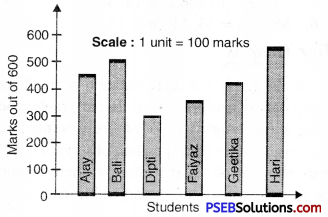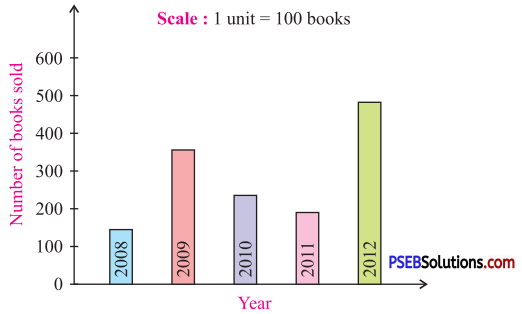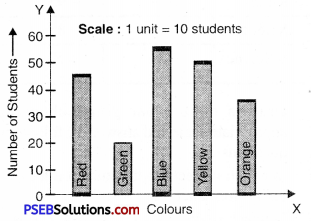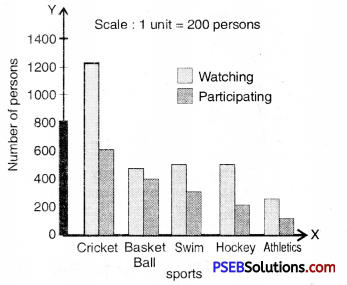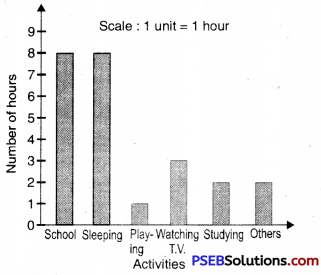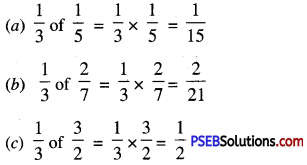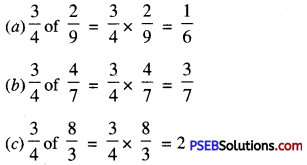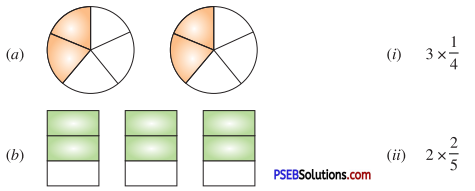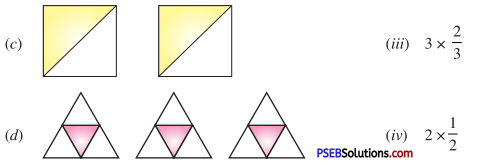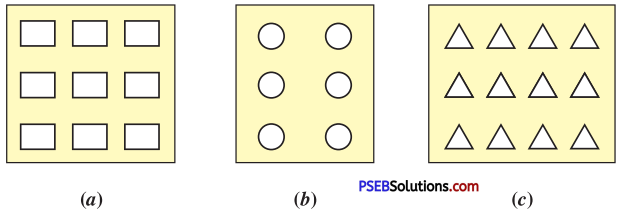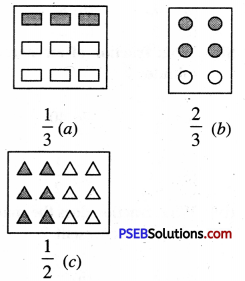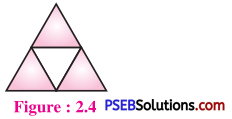Punjab State Board PSEB 7th Class Maths Book Solutions Chapter 3 Data Handling Ex 3.4 Textbook Exercise Questions and Answers.
PSEB Solutions for Class 7 Maths Chapter 3 Data Handling Ex 3.4
1. State whether the following is certain to happen, impossible to happen, may happen.
Question (i).
Two hundred people sit in a Maruti car.
Answer:
Impossible to happen.
Question (ii).
You are older than yesterday.
Answer:
Certain to happen.
Question (iii).
A tossed coin will land heads up.
Answer:
Can happen but not certain.
Question (iv).
A die when rolled shall land up 8 on top.
Answer:
Impossible to happen.
![]()
Question (v).
Tommorrow will be a cloudy day.
Answer:
Can happen but not certain.
Question (vi).
India will win the next test series.
Answer:
Can happen but not certain.
Question (vii).
The next traffic light seen will be green.
Answer:
Can happen but not certain.
2. There are 6 marbles in a box with numbers 1 to 6 marked on them.
(i) What is the probability of drawing a marble with number 5 ?
(ii) What is the probability of drawing a marble with number 2 ?
Solution:
Sample space : {1, 2, 3, 4, 5, 6}
There are 6 equally likely possible outcomes.
Outcomes : 1, 2, 3, 4, 5 or 6.
(i) Probability of drawing a marble with number 5 = \(\frac {1}{6}\)
(ii) Probability of drawing a marble with number 2 = \(\frac {1}{6}\)
![]()
3. There are two teams A and B. A coin is flipped to decide which team starts the game. What is the probability that team A will start ?
Solution:
When a coin is tossed once. The number of possible outcomes is head or tail
Sample space : [H, T]
The probability of getting head or tail is equal and is \(\frac {1}{2}\) for each.
∴ The probability that team A will start = \(\frac {1}{2}\)
4. A bag contains 3 red and 7 green balls. One ball is drawn at random from the bag. Find the probability of getting (i) a red ball (ii) a green ball.
Solution:
Total number of balls in the bag = 3 + 7 = 10
(i) The event is getting a red ball.
Probability (getting a red ball) = \(\frac {3}{10}\)
(ii) The event is getting a green ball.
Probability (getting a green ball) = \(\frac {7}{10}\)
5. Multiple Choice Questions :
Question (i).
The probability of an impossible event is : ………………
(a) -1
(b) 0
(c) \(\frac {1}{2}\)
(d) 1.
Answer:
(b) 0
![]()
Question (ii).
The probability of selecting letter G from the world ‘GIRL’ is :
(a) 1
(b) \(\frac {1}{2}\)
(c) \(\frac {1}{4}\)
(d) \(\frac {1}{3}\)
Answer:
(c) \(\frac {1}{4}\)
Question (iii).
When a die is thrown, the probability of getting a number 4 is :
(a) \(\frac {1}{2}\)
(b) \(\frac {1}{3}\)
(c) \(\frac {4}{6}\)
(d) \(\frac {1}{6}\)
Answer:
(d) \(\frac {1}{6}\)
Question (iv).
A bag contains 5 white balls and 10 black balls. The probability of drawing a white ball from the bag is :
(a) \(\frac {5}{10}\)
(b) \(\frac {5}{15}\)
(c) \(\frac {10}{15}\)
(d) 1
Answer:
(b) \(\frac {5}{15}\)

